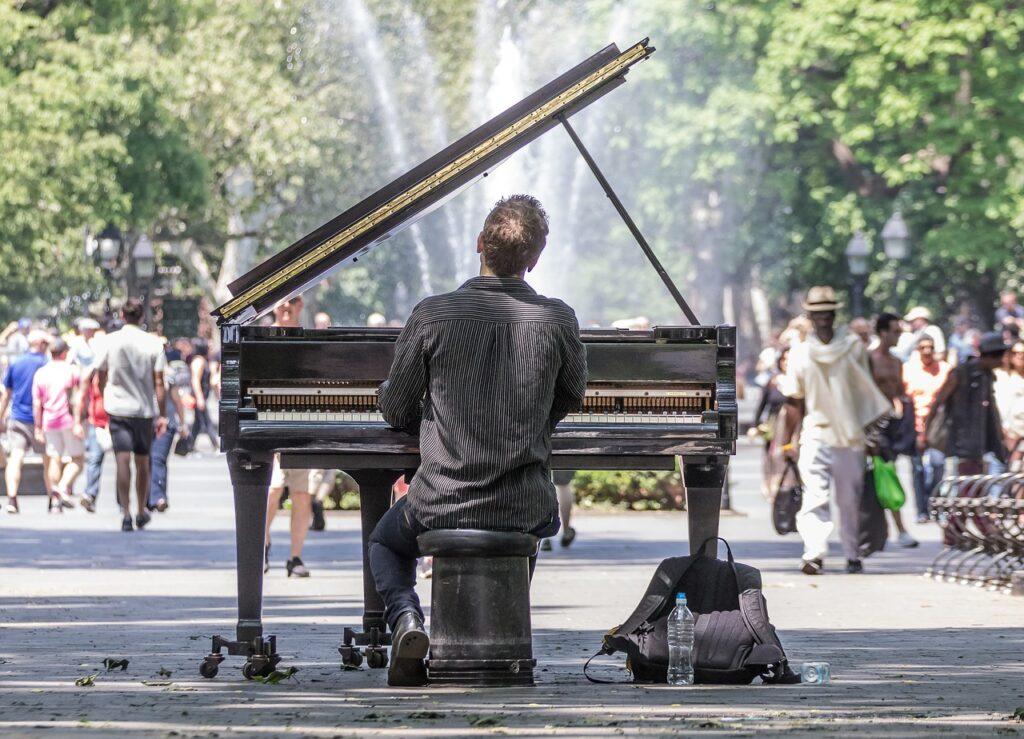Why do pianists occasionally play their hands at different times as they perform? Because the arpeggio sign in the score tells them to.
Usually, the rhythm in most music gets measured, meaning that we use counting numbers to precisely perform the music in time. However, sometimes the music will be unmeasured.
For instance, in the example above the right-hand (RH) plays arpeggios (broken chords) throughout. All the arpeggios, except the last one, will be played to a steady eighth note rhythm.
The last chord has a wavy line next to it. We call this wavy line an arpeggio sign or a rolled chord. The New Harvard Music Dictionary defines an arpeggio as, “A chord whose pitches are sounded successively, usually from lowest to highest, rather than simultaneously” (52).
In other words, the notes get played from lowest to highest very quickly with no counting involved. I like the term rolled chord, because on piano, you will do a rolling action with your wrist to get a nice quick arpeggio.
You can apply the arpeggio sign to one hand, as in the example above. Or you can use both hands to span across the two staves. You can see the arpeggio sign used this way in the last bar of the example below.
When you listen to the soundtrack, you can hear that the hands sort of line up, but not exactly. Play the lowest note of the left-hand (LH) chord first. Then, each higher note follows, first on LH and then on RH. That’s why pianists occasionally play their hands at slightly different times, because of the rolled chords.


